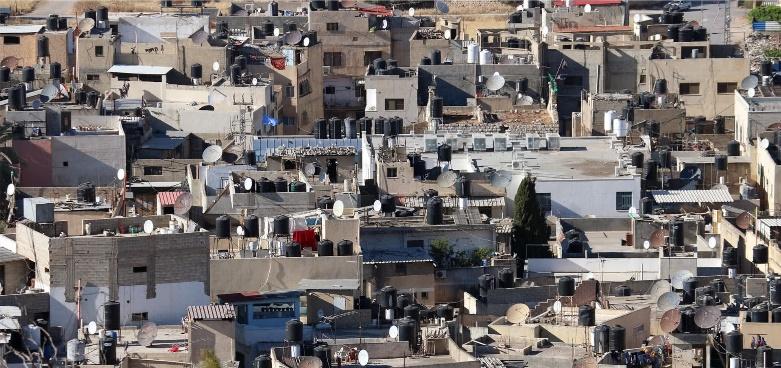
by Basma Damiri, Haytham Abumohsen, Souad BelKebir, Mahmoud Hamdan, Lubna Saudi, Hiba Hindi, Rawnaq Abdaldaem, Baraa Bustami, Abeer Almusleh, Osama Yasin
PloS One. March 29 2024;19(3):e0301145. DOI: 10.1371/journal.pone.0301145. eCollection 2024.
PHOTO: Established with 50 shelter units, the number of housing units in Jenin refugee camp grew to 1,280 by 2007, according to UNRWA. (Photo: DCIP / Ahmad Al-Bazz). https://www.dci-palestine.org/space_to_play
Abstract
Background: In the North of the West Bank, Palestine, women face a challenging environment and a demanding lifestyle, which puts them at a higher risk of experiencing complications during pregnancy. This study aimed to examine the risk factors linked with abnormal haemoglobin (Hb) levels, gestational diabetes (GD), diabetes mellitus (DM), and gestational hypertension (GH) among pregnant women. The results were compared between women residing in cities or villages areas and those in refugee camps.
Methods: Medical records (n = 7,889) for pregnant women at primary healthcare centres in the North of the West Bank were reviewed for socio-demographic and medical data along with the reported fasting blood sugar, haemoglobin, and blood pressure in the first and second trimesters from July 2018 to July 2020. However, only 6,640 were included in the analysis as 1,249 were excluded for having a multiple pregnancy or were lost to follow up. Complications and risk factors were defined according to the available global guidelines. Then, descriptive analysis was used to show the percentages of different risk factors and complications among them. The correlation between the several characteristics and variables with these complications was assessed by calculating the odds ratios (OR) using logistic regression. P-values of <0.05 were considered significant.
Results: The prevalence of adolescent pregnancy was the highest among women living in rural areas (9.8%) and grand multi-gravidity among refugee women (22%). The overall prevalence of anaemia was higher in the second trimester (16.2%) than in the first trimester (11.2%), with anaemic women in the first trimester being more likely to be anaemic in the second trimester (OR = 8.223, p-value <0.001). Although anaemia was less common in the first trimester among refugees than among women living in urban areas (OR = 0.768, p-value = 0.006), it was more prevalent in the second trimester (OR = 1.352, p-value<0.001). Moreover, refugee women were at lower risk than women living in urban areas of having gestational diabetes (OR = 0.687, p-value<0.001) and diabetes mellitus (OR = 0.472, p-value<0.001) in the second trimester. Gestational hypertension was associated with gestational diabetes (OR = 1.401, P-value = 0.003) and diabetes mellitus (OR = 1.966, p-value<0.001).
Conclusion: The findings of this study provide evidence-based data on the considerable prevalence of pregnancy complications, anaemia, GD, and GH among Palestinian pregnant women living in the north of the West Bank. Multi-gravida, gestational age, Hb levels, and the type of settings were strong predictors of pregnancy complications. Therefore, a national plan is needed to ensure adequate maternal care for all, especially disadvantaged women, those in rural areas and refugee camps.



